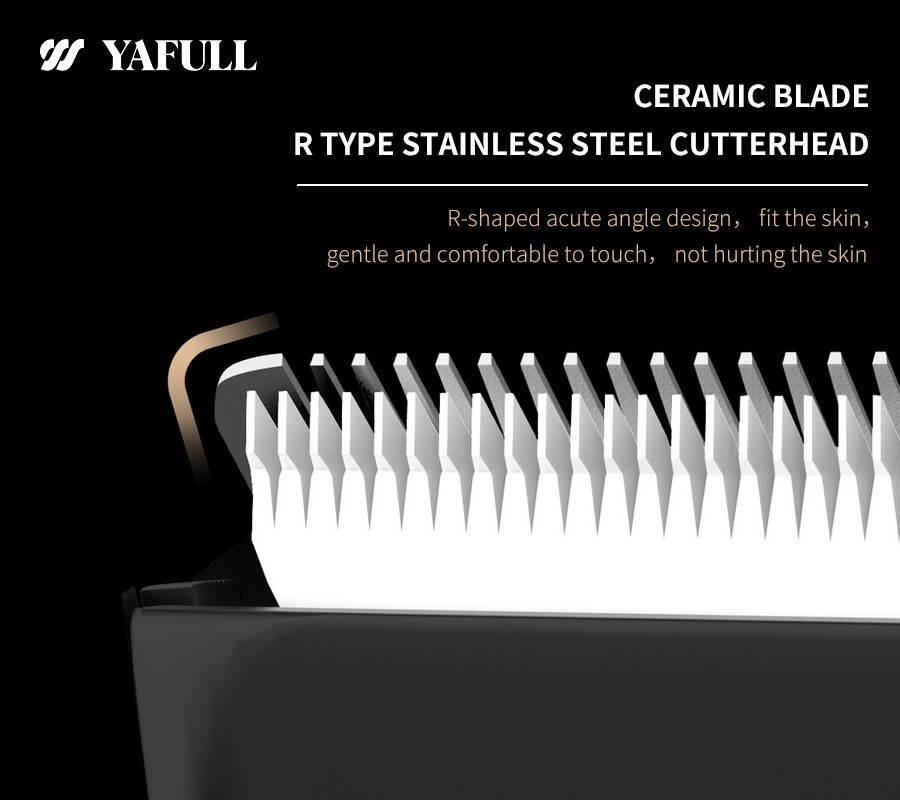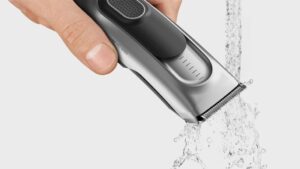What is ceramic blades?
Ceramic blades, as the name suggests, are blades made from ceramic materials. They are an alternative to the traditional stainless steel blades commonly found in hair trimmers and other cutting tools. Ceramic blades have gained popularity due to their unique properties and advantages in certain applications.
Unlike metal blades, ceramic blades are made from advanced ceramics, such as zirconium oxide or titanium carbide. These ceramic materials are exceptionally hard, durable, and resistant to wear and corrosion. This hardness allows ceramic blades to maintain their sharpness for a longer time compared to steel blades. They are less prone to dulling, which means they may require less frequent sharpening or replacement.
Ceramic blades also have the benefit of being non-magnetic and non-conductive. This makes them ideal for use in environments where electrical currents or magnetic fields are present, as they won’t interfere with the equipment or cause any safety concerns.
Another advantage of ceramic blades is their non-allergenic properties. Some individuals may have allergies or sensitivities to certain metals found in steel blades. Ceramic blades offer a hypoallergenic alternative, reducing the risk of skin irritation or allergic reactions during use.
However, it’s important to note that ceramic blades also have certain limitations. While they are highly durable, they are more brittle compared to steel blades. This means they may be more susceptible to breaking or chipping if dropped or mishandled. Additionally, the hardness of ceramic blades may make them less forgiving if used improperly, as they can cause more skin irritation or cuts if not used with care.
Ceramic blades are commonly used in hair trimmers, particularly for fine detailing work or for individuals with sensitive skin. They can provide a smooth cutting experience and are often favored for their long-lasting sharpness. However, it’s worth considering the specific needs and preferences of your intended use before deciding between ceramic blades and traditional steel blades.
Are ceramic hair clipper blades better than traditional stainless steel blades?
The superiority of ceramic hair clipper blades over traditional stainless steel blades is subjective and dependent on individual preferences and specific use cases. Both types of blades have their own advantages and considerations.
Advantages of ceramic hair clipper blades:
Sharpness retention: Ceramic blades tend to maintain their sharpness for a longer time compared to stainless steel blades. This means they may require less frequent sharpening or replacement.
Heat resistance: Ceramic blades have better heat resistance than stainless steel blades. They can withstand higher temperatures without affecting their cutting performance. This can be beneficial for professional stylists who use hair clippers for extended periods or need to cut thick or coarse hair.
Non-allergenic: Ceramic blades offer a hypoallergenic alternative for individuals with metal allergies or sensitivities. They reduce the risk of skin irritation or allergic reactions during haircuts.
Considerations for ceramic hair clipper blades:
Fragility: Ceramic blades are more brittle than stainless steel blades. They can be prone to breaking or chipping if dropped or mishandled. Careful handling and storage are necessary to prevent damage.
Cost: Ceramic blades are often more expensive than stainless steel blades. This higher cost can be a consideration for those on a budget or who may need to replace the blades frequently.
Cutting versatility: Stainless steel blades are generally considered more versatile for various hair types and textures. They can handle both fine and coarse hair effectively. Ceramic blades, while excellent for finer detailing work, may not be as suitable for cutting thick or coarse hair.
In summary, the choice between ceramic hair clipper blades and traditional stainless steel blades depends on factors such as personal preference, specific needs, and budget. Ceramic blades can offer advantages in terms of sharpness retention, heat resistance, and hypoallergenic properties, but they may be more fragile and costly. Stainless steel blades are more versatile and generally more affordable, making them a popular choice for a wide range of hair types.







